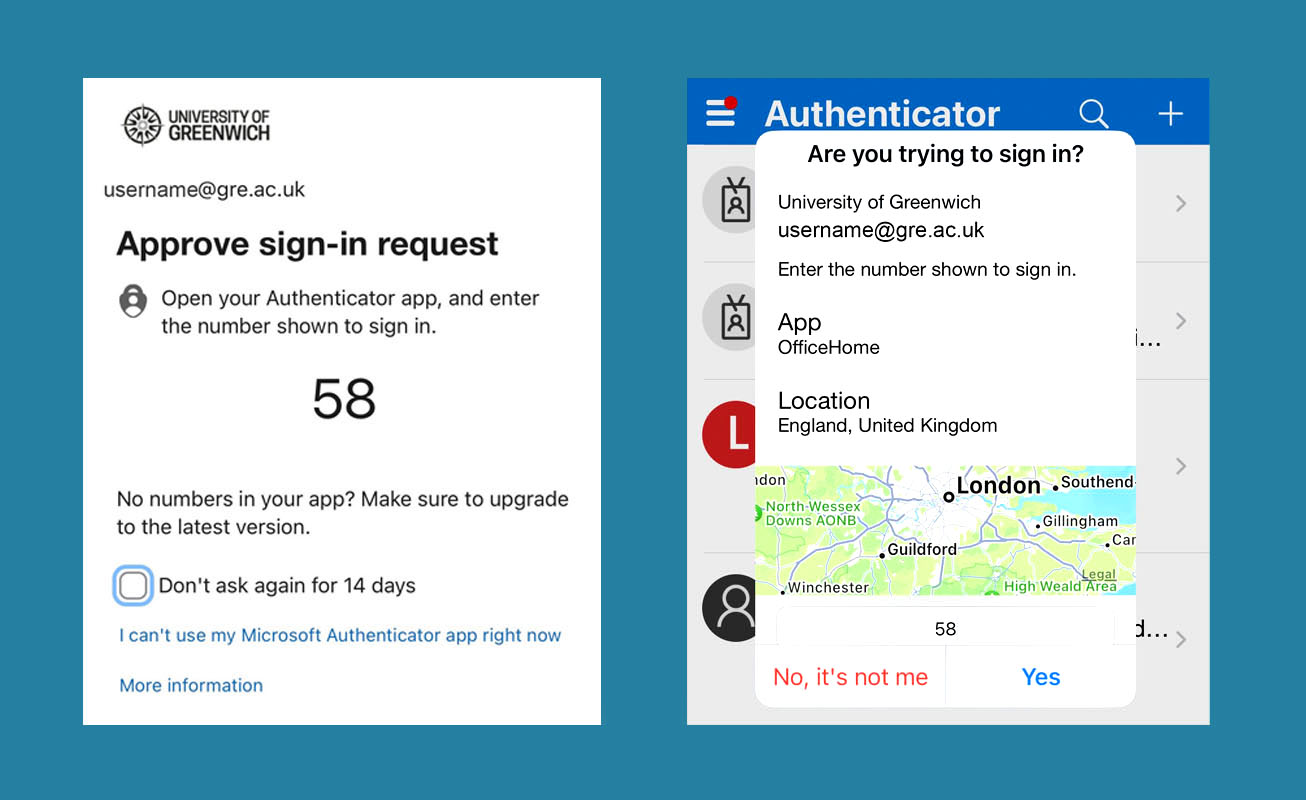Multi-factor authentication (MFA) has proven to be a key factor in preventing cyber-attacks. We recommended that all our staff and students use the Microsoft Authenticator app set to 'receive notifications for verification' as it provides the fastest and easiest method of MFA approval. Find out how to set up the Microsoft Authenticator app on your devices here.
Over the last few months there have been several high-profile attacks on organisations through a successful MFA Fatigue attack. We will soon enable new security features via the Authenticator app to protect against this type of hacking attempt.
Number matching and additional information via the Microsoft Authenticator app
There have been two updates to the Microsoft Authenticator app, to help protect you from MFA Fatigue and other attacks.

Number matching means you need to enter the number shown on the login page into your Microsoft Authenticator app to approve the authentication request. This protects against MFA fatigue attacks by making sure you are approving access to the system you need.
Additional Context will give you more information about the system you’re logging into and its location. This means you can check before deciding whether to approve or deny the request.
To report suspicious messages or issues with multi-factor authentication, please contact the IT Service Desk.

